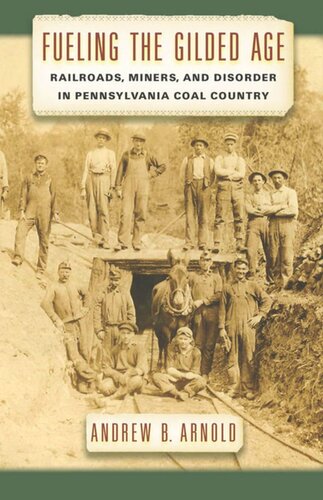

Most ebook files are in PDF format, so you can easily read them using various software such as Foxit Reader or directly on the Google Chrome browser.
Some ebook files are released by publishers in other formats such as .awz, .mobi, .epub, .fb2, etc. You may need to install specific software to read these formats on mobile/PC, such as Calibre.
Please read the tutorial at this link: https://ebookbell.com/faq
We offer FREE conversion to the popular formats you request; however, this may take some time. Therefore, right after payment, please email us, and we will try to provide the service as quickly as possible.
For some exceptional file formats or broken links (if any), please refrain from opening any disputes. Instead, email us first, and we will try to assist within a maximum of 6 hours.
EbookBell Team

4.1
20 reviewsIf the railroads won the Gilded Age, the coal industry lost it. Railroads epitomized modern management, high technology, and vast economies of scale. By comparison, the coal industry was embarrassingly primitive. Miners and operators dug coal, bought it, and sold it in 1900 in the same ways that they had for generations. In the popular imagination, coal miners epitomized anti-modern forces as the so-called “Molly Maguire” terrorists.
Yet the sleekly modern railroads were utterly dependent upon the disorderly coal industry. Railroad managers demanded that coal operators and miners accept the purely subordinate role implied by their status. They refused.
Fueling the Gilded Age shows how disorder in the coal industry disrupted the strategic plans of the railroads. It does so by expertly intertwining the history of two industries—railroads and coal mining—that historians have generally examined from separate vantage points. It shows the surprising connections between railroad management and miner organizing; railroad freight rate structure and coal mine operations; railroad strategy and strictly local legal precedents. It combines social, economic, and institutional approaches to explain the Gilded Age from the perspective of the relative losers of history rather than the winners. It beckons readers to examine the still-unresolved nature of America’s national conundrum: how to reconcile the competing demands of national corporations, local businesses, and employees.